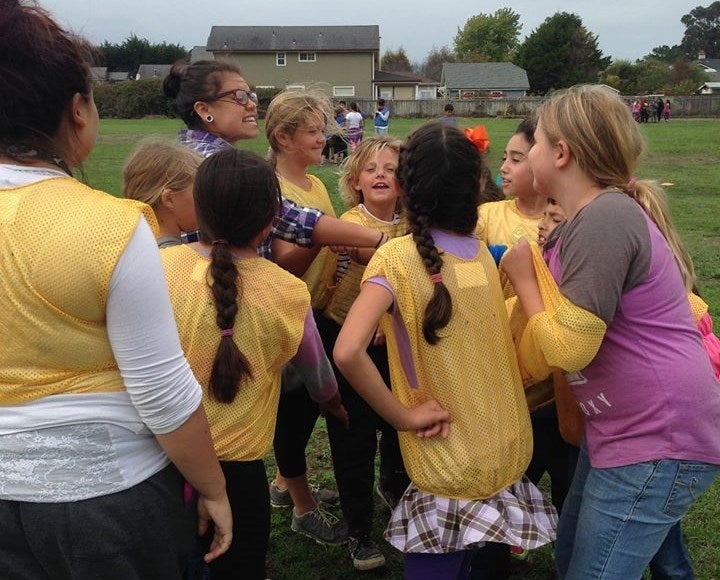Youth Reaching Youth
Case Study: The HEAL Project
The Need: Complimentary Goals
Students who participate in Pilarcitos High School’s alternative education program in Half Moon Bay, California are academically behind for a variety of reasons. The hurdles many of these students face include: childhood trauma, full-time jobs, undiagnosed learning disabilities, pregnancy and parenthood, and—on top of all that—English is commonly their second language. When Rajan (Raj) Bechar was just beginning his tenure as Principal at Pilarcitos in 2013, he was eager to enhance the programs and services required to create flexible educational plans matched to the students’ strengths and needs.
“Society in general, and the world, is changing with technology pulling kids in front of screens and indoors. It’s more important now than ever to get children outdoors where they will develop a love for the land.” -Raj Bechar
It so happened that Annette Ochoa, the coordinator for The HEAL Project based at Alvin S. Hatch Elementary School, was in desperate need of help coordinating and staffing recess activities for the entire elementary school. Spotting this promising opportunity and having worked with Pilarcitos students in the past, Annette approached Raj about a partnership: Annette could get the help she needed while Raj’s students could get the opportunities they needed by bringing together the high school and elementary school students around Noontime Sports, Garden Clubs, and cooking demonstrations.
The Solution: Collaboration
The HEAL Project partnership allowed students to give back in a meaningful way, helping Annette with her goals of increasing physical activity and healthy eating among the elementary school students. “As much as food exposure was important,” remarks Annette, “[the high school interns] really needed support in preparing for their next steps beyond high school.” Throughout 2014, Annette coordinated two rotations of the program, each with four Pilarcitos students. The interns first shadowed Annette to learn their duties and then took over the planning, organizing, and execution of the Noontime Sports activities, Garden Club lessons, and cooking demonstrations. In return, the interns received school credit, a stipend, and professional development including resume workshops, leadership training, and interview practice and feedback. As for what the elementary students gained, Raj observes how, “The [Pilarcitos] students’ experiences that led them to continuation school give them perspective that is extremely valuable for working with youth who look up to them. Many of the high school students’ strengths happen to be in areas that align well with working with younger students.”
The Essential Ingredient For Success: Dedication Challenges Looking To The Future
Both Annette and Raj agree: “Dedicated people on the ground who believe in the value of outdoor education and mentorship—this ensures takeoff and sustainability.” As helpful as it was for Annette to have the extra bodies and brains to work with the elementary students, a program like this that requires intensive training and mentorship is extremely time-consuming and demanding. In addition to having the passion and dedication of someone like Annette, the program needs to remain an elective that serves as a paid internship with job preparation and training for the high school interns. With these incentives in place, the high school students who choose to participate will want to be there doing this work. “Once you have that,” says Annette, “you will be able to earn their trust and draw out their enthusiasm, and with that they will give it their all, learn, and be involved in the process.”
Challenges
Reflecting on the hardest aspects of the program, Annette recalls how, “Getting interns to positively contribute to the elementary school program—to really listen and then apply what they had learned—required a lot of effort and a lot of follow up and leadership coaching to help them understand their influence on the younger students.” In working with both the high school interns and the elementary students, she found innovation essential: “These students really are just trying to get by. They’re thinking much more about what the cheapest, tasty food is, rather than what they should be eating. Figuring out a way to make them comfortable and receptive to new and healthy foods involved a lot of creativity, a lot of trial-and-error.” Combining these challenges with the fact that many of the high school interns struggled with soft skills— punctuality, being organized, and staying engaged—required tremendous stamina on Annette’s part, however it paid off. Both Raj and Annette witnessed an unprecedented amount of growth on the part of the interns, in addition to their work “absolutely” having a positive impact on the elementary school students’ attitudes towards healthy eating and physical activity.
Looking to the Future
In the final semester of the program, Annette and the interns experimented with adding elements to the cooking demonstrations that were well-received and definitely something to continue developing into the future. While all parties involved speak to the success of the program and the desire to continue, staff turnover at The HEAL Project has put this program on hold for now. A huge component that would help to ensure consistency in offering the program would be figuring out a sustainable funding source to reduce reliance on year-to-year grants, a challenge that is all too familiar to nonprofit organizations.


